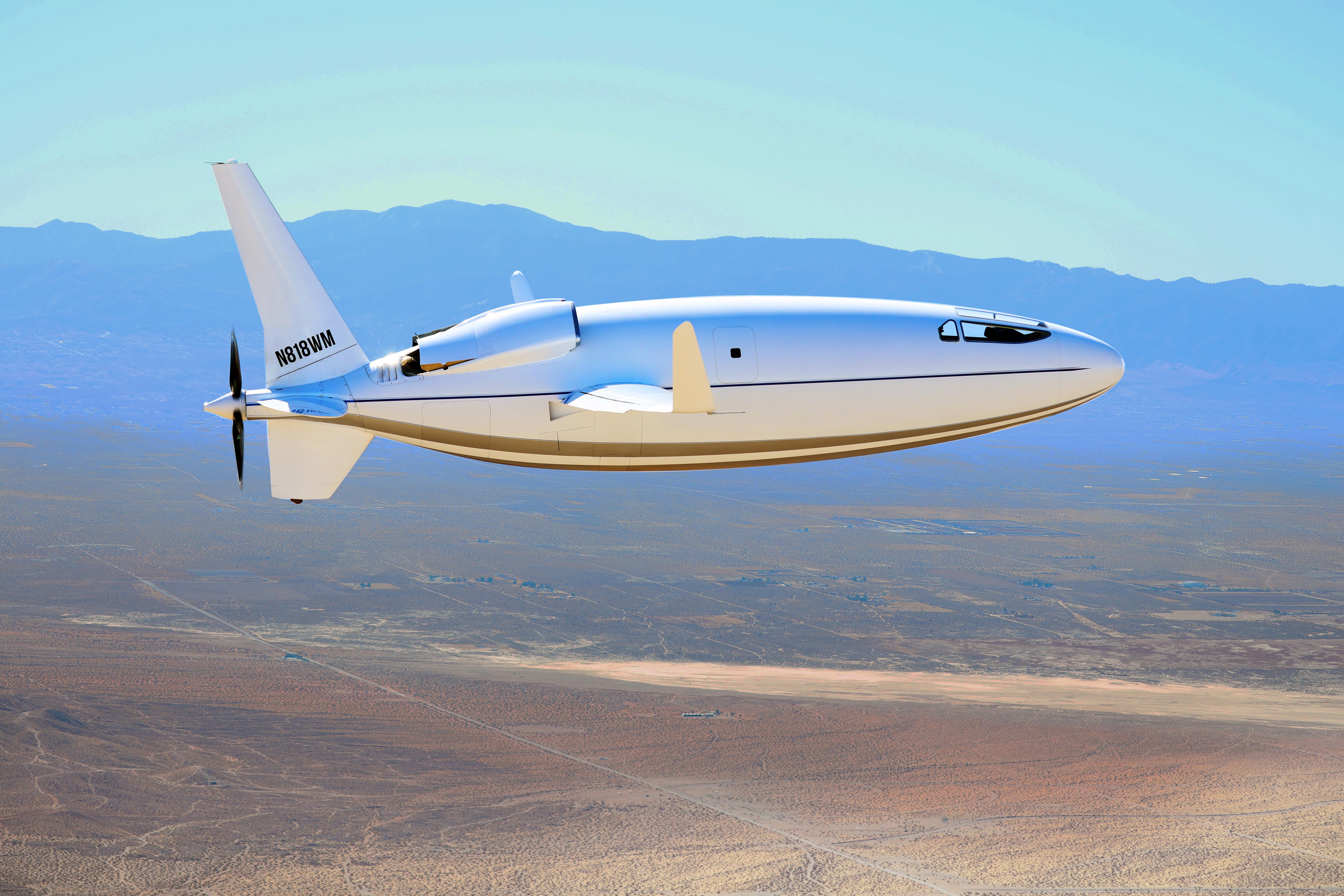
The subject of mystery and speculation since the first unofficial pictures appeared, an unusual business aircraft has finally emerged into public view with the formal introduction of the Otto Aviation Celera 500L.
The aircraft, an aerodynamic prototype which first flew in January 2018, comes with eyebrow-raising performance claims–a stand-up cabin for six passengers and 4,500 nm range cruising at more than 400 kt. on a single 500-hp turbocharged diesel-cycle piston engine burning 16-22 nm/gal. of Jet A fuel.
A smaller, more fuel-efficient engine, low-drag, high-aspect-ratio wing and extensive drag-reducing laminar flow over the wing, fuselage and tail are the keys to Otto’s performance claims for the aircraft.
Otto Aviation was self funded until 2008 and has been privately funded since then. The Yorba Linda, California-based startup has launched a Series B fundraising round. The company estimates it needs “a couple of hundred million dollars” to take the Celera 500L to FAA Part 23 certification, which it anticipates will be a “three-year process,” CEO Bill Otto Jr. says. The certification prototype is expected to fly within 18 months.
The project was started by William Otto, a former engineer at North American Aviation, who was looking for an aircraft that was fast but inexpensive to operate. “It started as a kind of hobby. His intent was to build an experimental aircraft for himself,” says Otto Jr., his son.
The aerodynamic prototype first flew at Victorville, California, in January 2018. Secretly taken pictures of the bullet-shaped aircraft caused a stir of speculation and skepticism when they appeared online. The prototype began performance testing in September 2019.
The 31 flights completed before COVID-19 pandemic restrictions halted testing in March validated the aircraft’s performance goals, Otto said. The extent of smooth laminar flow achieved in flight was measured using infrared imaging. “We are getting excellent laminar flow,” he says.
The Celera 500L is powered by a 500-hp RED Aviation A03 V12 four-stroke diesel-cycle engine. In the prototype this has a single turbocharger stage, which restricts maximum altitude to 20,000 ft. This also limits the extent of laminar flow that can be achieved, says David Bogue, head of aerodynamics and formerly with Boeing and Boom Supersonic.
The production-conforming prototype now in design will have a two-stage turbocharger, which will enable the aircraft to cruise at 40,000-50,000 ft., similar to business jets, where full laminar can be achieved, Bogue says. With full laminar flow, Otto estimates drag will be 59% lower than competing aircraft.
The 4,500-nm range claim is with full laminar flow, but this can be disrupted by contamination, such as insects, so the Celera’s performance will be certified with full turbulent flow. Guaranteed range will be less than 4,500 nm, so operators will see laminar flow as an added benefit in operation, Bogue says.
Otto says the prototype’s purpose was to demonstrate the aerodynamics, and the aircraft is overbuilt structurally for safety, so the focus in design of the conforming prototype is on optimizing weight. There will be other design changes, such as cabin windows and longer landing gear. Flush inlets will replace the large cooling intakes on top of the rear fuselage.
In addition to a smooth surface finish for laminar flow, there are other drag-alleviating design features such as the integrated winglets and the pusher propeller, which ingests and re-energizes the slow-moving fuselage boundary layer to minimize the momentum loss in the wake.
Mounting the propeller on the tail also avoids the Piaggio Avanti’s noise issue with its wing-mounted pusher props, Bogue says. But it does mean the aircraft has to land with a fairly flat attitude to protect the prop, and pilots will need tailstrike training. Otto is targeting a 3,500-4,000-ft. balanced field length.
Other Celera 500L design features include a 6.2-ft.-high cabin, mechanically linked flight controls and a single-pilot instrument flight rules avionics fit. The powerplant operates as two six-cylinder engines, providing redundancy, and the wing enables a 22:1 glide ratio, a threefold improvement, Otto says.





